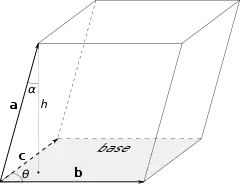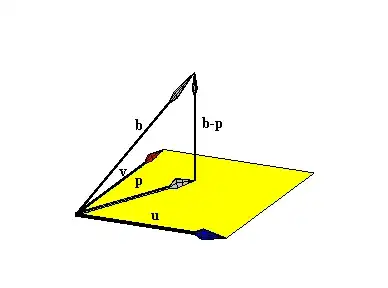$\newcommand{\b}{\mathbf}$Following two statements were given in the book to motivate the reader about the formal definition of determinants but I only got demotivated and frustrated by these statements.
The parallelepiped determined by the vectors $\b v_1 ,\b v_2 , . . . , \b v_n$ can be defined as the collection of all vectors $\b v ∈ \Bbb R^n$ that can be represented as $\b v = t_1\b v_1 + t_2\b v_2 + . . . + t_n\b v_n$ , $0 ≤ t_k ≤ 1\ ∀k = 1, 2, . . . , n.$
And
We know, that for dimensions $2$ and $3$ “volume” of a parallelepiped is determined by the base times height rule: if we pick one vector, then height is the distance from this vector to the subspace spanned by the remaining vectors, and the base is the $(n − 1)$-dimensional volume of the parallelepiped determined by the remaining vectors.
In first statement I didn't understand why author says that a parrellepiped is defined by infinitely many vectors. Don't we only need position vectors of the vertices of parrallelepiped to define it ? Like in $\Bbb R^2$, $\{ (1,0)^T, (0,1)^T, (1,1)^T, (0,0)^T\}$ define a parrallelepiped (parallelogram).
In the second statement, it would be hyperbole if I say I understand anything. More specifically I did not understand "if we pick one vector, then height is the distance from this vector to the subspace spanned by the remaining vectors", what does this even mean ? Distance between a vector and a vector space ? I think my lack of background in geometry is bitting me.

